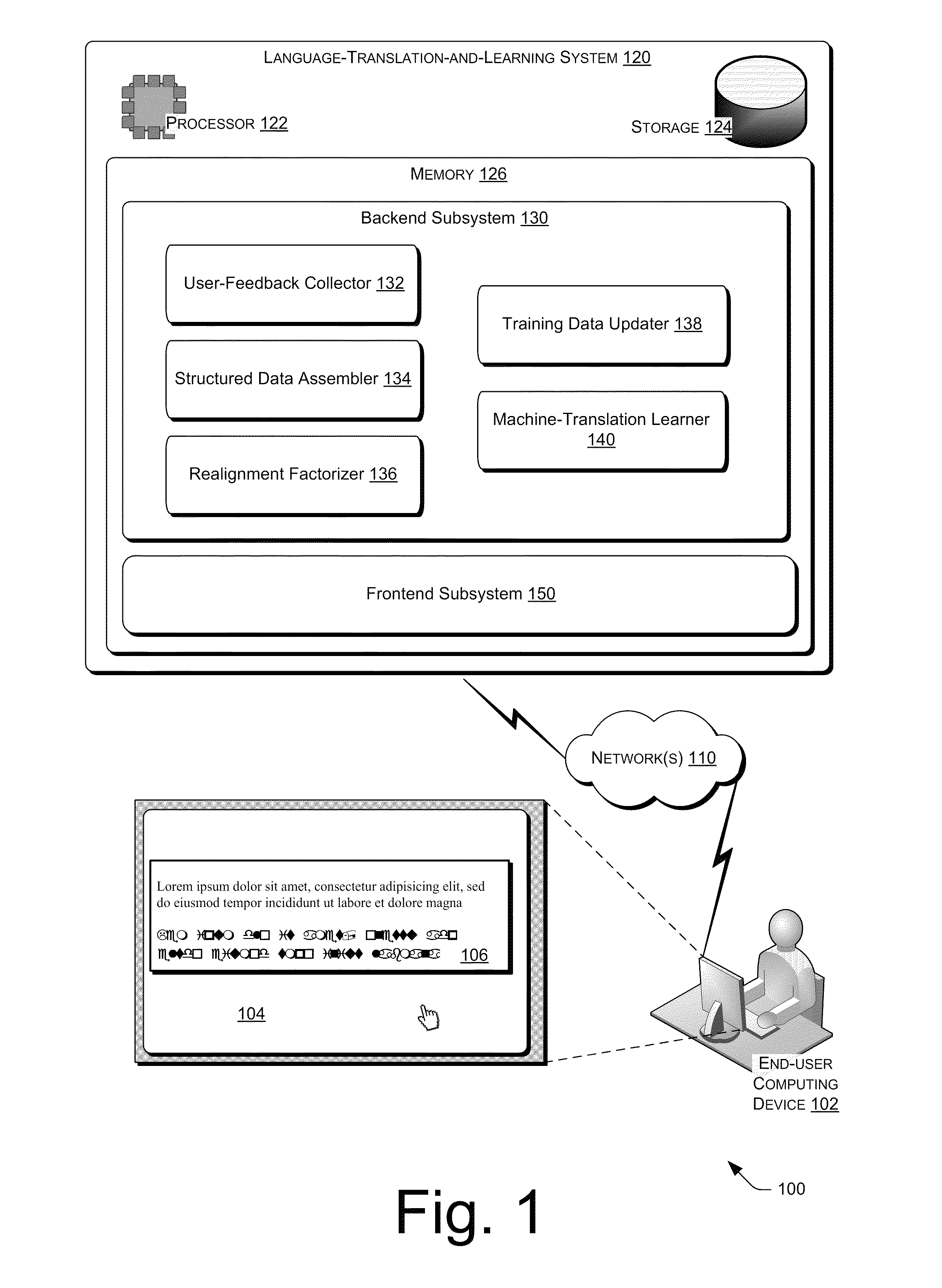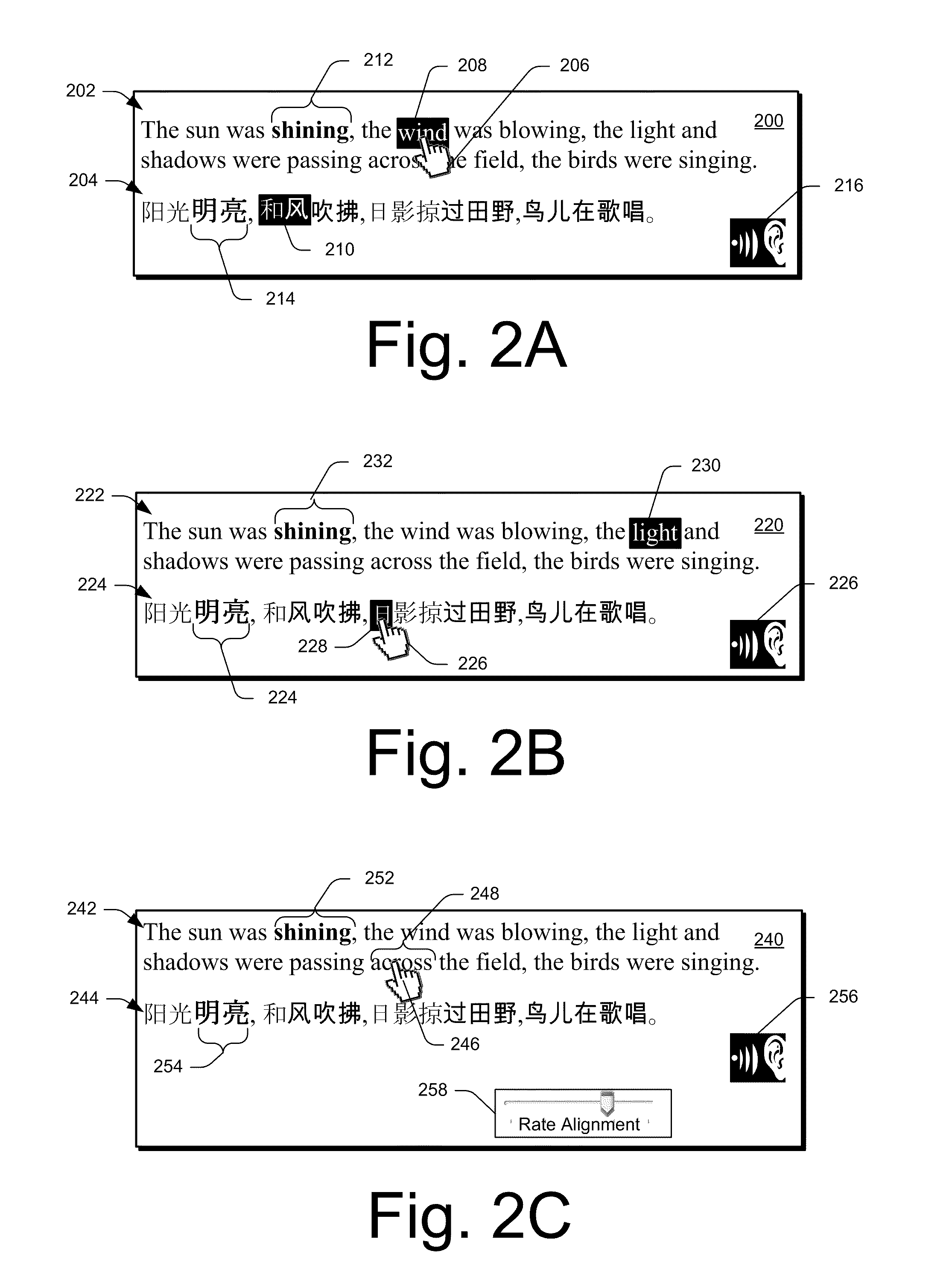Interactive multilingual word-alignment techniques
- Summary
- Abstract
- Description
- Claims
- Application Information
AI Technical Summary
Benefits of technology
Problems solved by technology
Method used
Image
Examples
Embodiment Construction
[0013]Described herein are techniques for interactively presenting word-alignments of multilingual translations and automatically self-improving those translations based upon user feedback. With one or more implementations of the techniques described herein, a word-alignment user-interface (UI) is employed to, for example, help a person learn a new language. The UI concurrently displays a pair of bilingual sentences. Each sentence is the intended to be essentially the same as the other in meaning, but one is translated from the other into another language.
[0014]The UI allows a user to interact with the sentences through use of cursor. When the user hovers the cursor over one of the words in one of the sentences, both that word and its corresponding word in the other sentence are highlighted. The two highlighted and corresponding words are word-aligned with each other because the words are translated from one language to the other. Accordingly, the user can quickly see which words tr...
PUM
 Login to View More
Login to View More Abstract
Description
Claims
Application Information
 Login to View More
Login to View More - R&D
- Intellectual Property
- Life Sciences
- Materials
- Tech Scout
- Unparalleled Data Quality
- Higher Quality Content
- 60% Fewer Hallucinations
Browse by: Latest US Patents, China's latest patents, Technical Efficacy Thesaurus, Application Domain, Technology Topic, Popular Technical Reports.
© 2025 PatSnap. All rights reserved.Legal|Privacy policy|Modern Slavery Act Transparency Statement|Sitemap|About US| Contact US: help@patsnap.com



